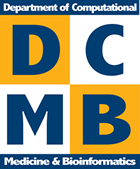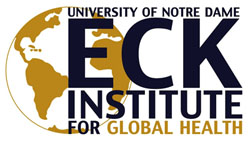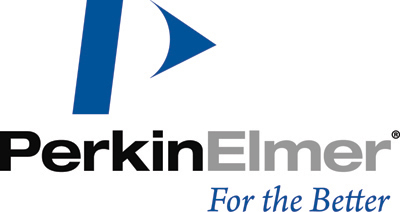Great Lakes Bioinformatics Conference 2015
TUTORIALS - Monday, May 18
last edit: April 28, 2015
CourseSource - Robin Wright, Department of Biology Teaching and Learning; Department of Plant Biology, University of Minnesota -http://www.coursesource.org/
Course Description: Publishing Teaching Materials in CourseSource, a New Peer-reviewed, Open-access Journal for Undergraduate Biology Education
Improving biology education by publishing in CourseSource, a peer-reviewed, open-access journal of teaching resources - In response to the many national calls for transformation of undergraduate science education, colleges and universities nationwide are beginning to approach their undergraduate science courses in new ways. Unfortunately, change has been slow and fragmented. One of the greatest hurdles to undergraduate education transformation is the time, energy, and vision that instructors need to create evidence-based lessons, courses, and curricula. With support from the Howard Hughes Medical Institute and in collaboration with scientific societies, a new peer-reviewed, open-access journal called CourseSource (coursesource.org) is now available. CourseSource publishes field-tested activities that implement best practices in scientific teaching and that address learning goals determined by scientific societies.
This workshop will begin with a review of the CourseSource article format, review criteria, and submission process. Participants will then be able to consult about their ideas for articles and to begin work on a potential submission. Each participant should leave with an outline for at least one contribution to this new journal.
- - - - - - - - - - - - - - - - - - - - - - - - - - - - - - - - - - - - - - - - - -
Medical Imaging - Li Shen, Indiana University - www.iu.edu/~shenlab/
Course Description: Today's generation of multi-modal imaging systems produces massive high dimensional data sets, which when coupled with high throughput genotyping data such as single nucleotide polymorphisms (SNPs), provide exciting opportunities to enhance our understanding of phenotypic characteristics and the genetic architecture of human diseases. However, the unprecedented scale and complexity of these data sets have presented critical bottlenecks requiring new concepts and enabling tools. In this talk, using the quantitative genetics study of the Alzheimer's Disease Neuroimaging Initiative (ADNI) data as an example, we discuss the recent development of bioinformatics strategies for multidimensional brain imaging genomics. We review and synthesize ADNI genetic associations with disease status or quantitative disease endophenotypes including structural and functional neuroimaging, fluid biomarker assays, and cognitive performance. We briefly discuss the diverse analytical strategies used in these studies, and present a very recent study on transcriptome-guided amyloid imaging genetic analysis via a novel structured sparse learning algorithm. We perform pathway and network enrichment analyses of these ADNI genetic associations to highlight key mechanisms that may drive disease onset and trajectory. We show that the broad availability and wide scope of ADNI genetic and phenotypic data has advanced our understanding of the genetic basis of AD and has nominated novel targets for future studies.
- - - - - - - - - - - - - - - - - - - - - - - - - - - - - - - - - - - - - - - - - -
NGS Sequencing - Rich McEachin, University of Michigan - www.ccmb.med.umich.edu/node/244
Course Description: RNA-Seq data analysis tutorial
RNA-Seq is a method of assessing gene expression and differential gene expression using high throughput DNA sequencing technology (Next Generation Sequencing or NGS). Today’s workshop will introduce RNA-Seq technology and RNA-Seq data analysis, and demonstrate an application. We will start from raw reads data and proceed through the analysis to develop a report that would be appropriate to give to a Core customer. This pipeline uses the familiar Tuxedo Suite as the engine driving alignment, quantitation of expression, and differential expression analysis. Beyond these basics, the pipeline performs extensive quality control and error checking, reporting, and formatting of output to make it user friendly. In addition, the RNA-Seq pipeline is a tool for testing competing approaches to RNA-Seq data analysis, allowing us to assess the effectiveness of new algorithms or software in parallel with our primary analyses. Note that the raw reads data used in this analysis are publicly available and we provide a script that would allow a user to perform a simplified analysis at a later date. While “just the basics”, this simplified analysis would allow a user to get a feel for the essentials of the task, as well as to explore parameter settings and gain a deeper understanding of the process.
Biography: Rich is a research faculty member in the Department of Computational Medicine and Bioinformatics (DCMB) at the University of Michigan, working primarily in the Bioinformatics Core (one of the UM Biomedical Research Core Facilities). Rich’s education emphasizes statistics and genetics, and he has more than ten years of experience in the field. Rich has been extensively involved in developing, testing, refining, and using the analysis pipeline the Core uses for RNA-Seq data analysis. The UM Bioinformatics Core performs a wide range of bioinformatics analyses (e.g. RNA-Seq, ChIP-Seq, Exome-Seq, assembly, systems biology, custom analyses) providing services to investigators who have sophisticated analysis needs but who do not have the necessary analytical skills, software, or hardware in-house. The UM Bioinformatics Core serves the needs of researchers at the University of Michigan and across the Great Lakes region.
- - - - - - - - - - - - - - - - - - - - - - - - - - - - - - - - - - - - - - - - - -
Personalized Medicine - Yana Bromberg, Rutgers University -
bromberglab.org/?q=people
Course Description: The goal of this workshop is to provide a broad overview the history, advances and current state of the art in customization of medical care, i.e. personalized medicine. It will be formatted in an outline of a conceptual personalized medicine pipeline, which, we hope, one may see in a doctor's office one day. We will describe the ideas and approaches, tools and data sources, required to analyze and draw inferences relevant to specific individual genetics. We will highlight problems with existing techniques and findings (e.g. exactly how significant are findings of GWAS annotated diseases SNPs in an individual’s genome?) and propose potential solutions using available data (e.g. computational means of narrowing down whole-genome variation to that which might be disease-causing). Finally, we will discuss some examples of existing and, arguably, most actionable applications of personalized medicine – pharmacogenomics findings. We will also peek into the possible future of this science (e.g. how should the "personal metagenome" be incorporated into personalized medicine) and discuss some of the ethical questions and implications of application of personalized medicine. The workshop will be in a seminar format, i.e. lecture with lots of space for discussion.
Biography: Dr. Bromberg is an assistant professor at the Department of Biochemistry and Microbiology, Rutgers University. She also holds an adjunct assistant professor position at the Department of Genetics at Rutgers and has recently become a fellow at the Institute of Advanced Studies in the Technical University of Munich. She received her Bachelor's degrees in Biology and Computer Sciences from the State University of New York at Stony Brook and a Ph.D. in Biomedical Informatics from Columbia University, New York. Dr. Bromberg is known for her seminal work on a method for screening for non-acceptable polymorphisms, or SNAP for short, which evaluates the effects of single amino acid substitutions on protein function. Currently, her research is focused on the analysis of human variomes for disease predisposition, functional annotation of microbiomes, and the study of evolution of life's electron transfer reactions. Her work was recognized by several awards, including the Hans-Fischer award for outstanding early career scientists and recognition for the top performance in the Critical Assessment of Genome Interpretation experiment. Dr. Bromberg actively participates in organizing the ISMB/ECCB conferences (ISMB stands for Intelligent Systems for Molecular Biology, and ECCB is its European equivalent). She chairs this year's overall Disease theme of the conference, as well as poster-and-talk sessions. She conducts workshops, and organizes a special interest group aimed at the study of genomic variation -- VarI-SIG. Dr. Bromberg also serves as an editor and a reviewer of several top bioinformatics journals. For more information see http://bromberglab.org/





